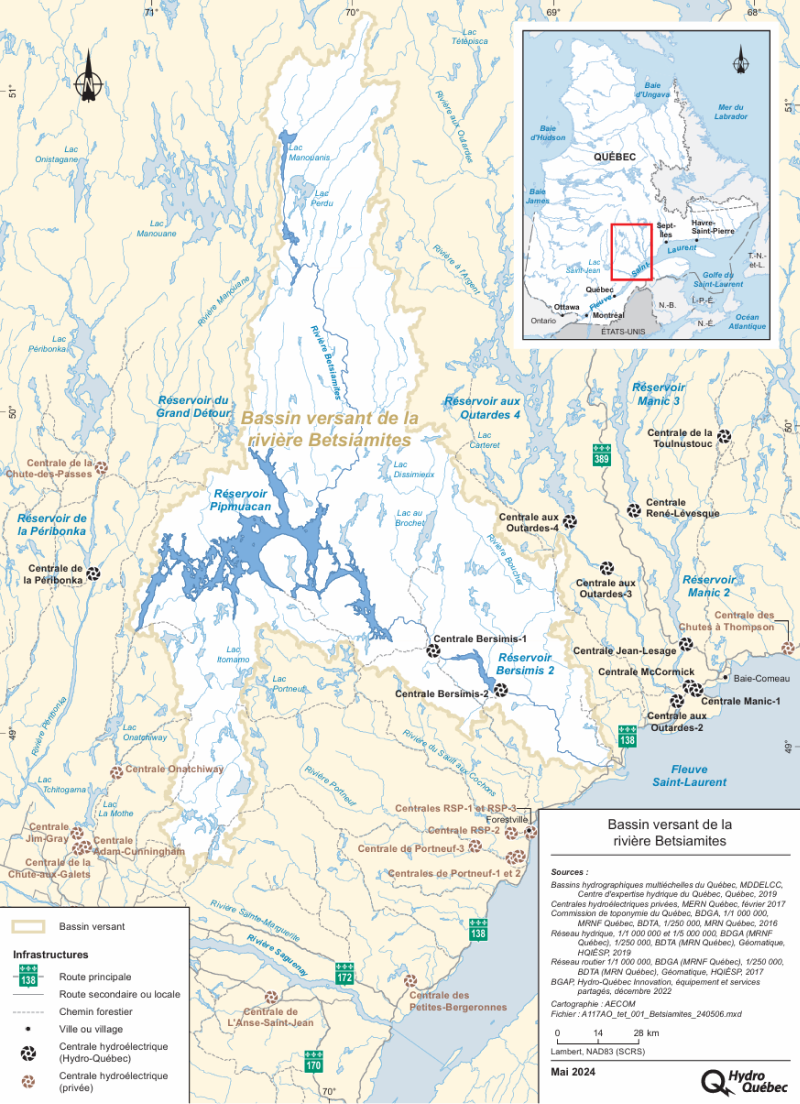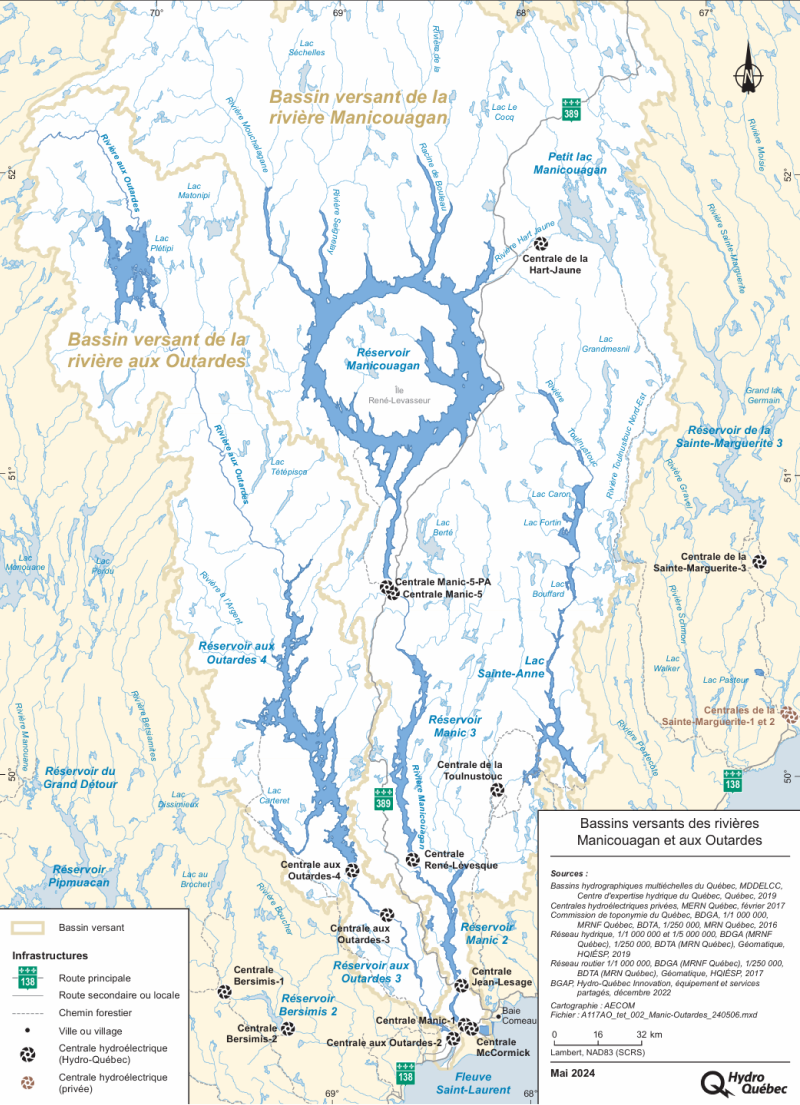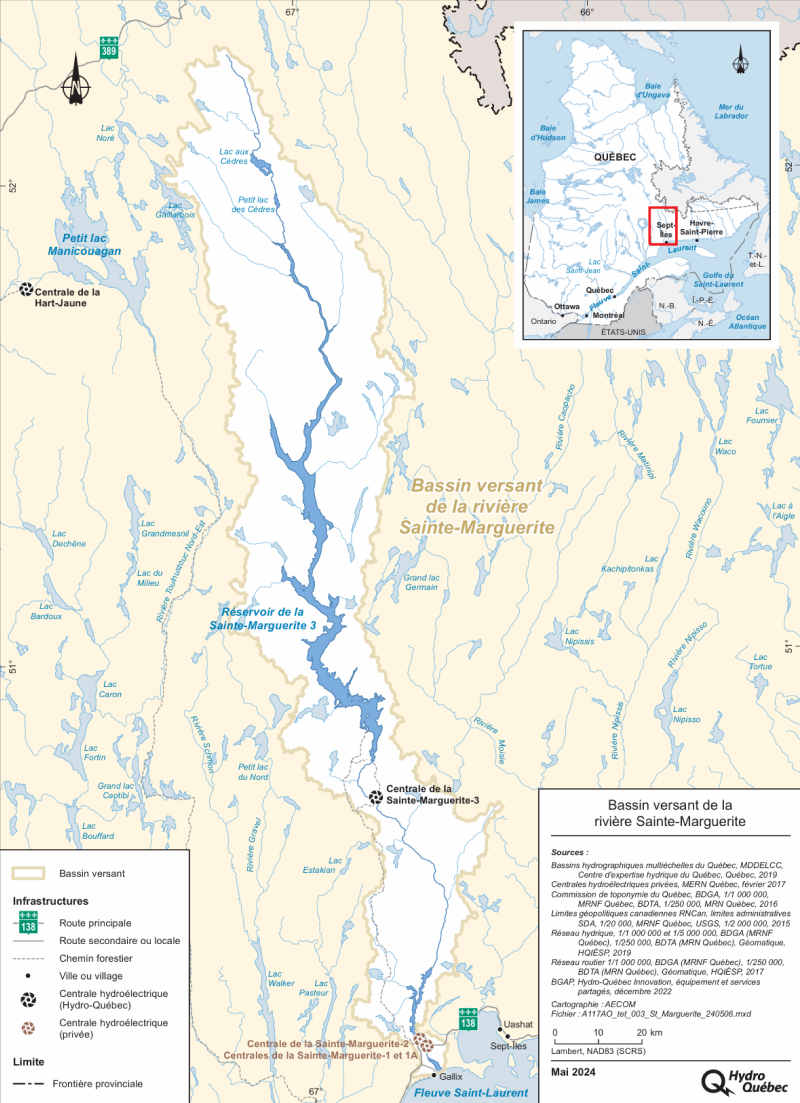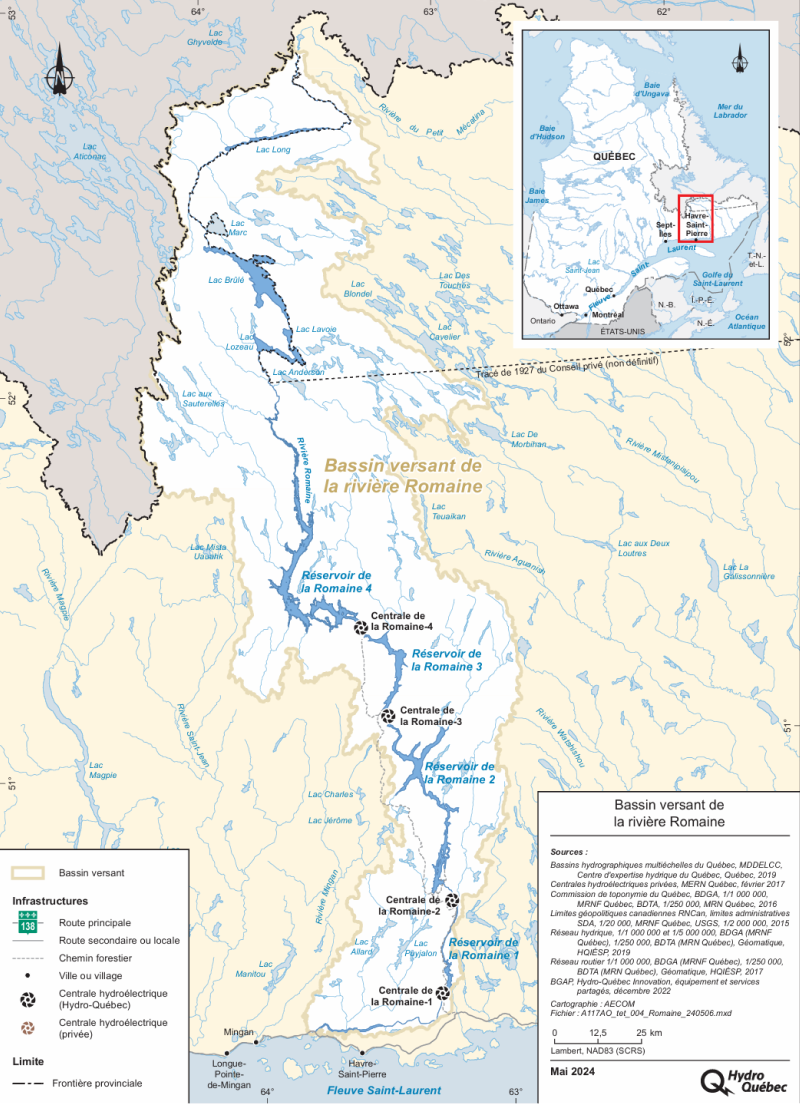Important reminder
In the event of a flood, contact your municipality. They will advise the Ministère de la Sécurité publique du Québec, which coordinates all flood-related activities.
Côte‑Nord
Hydro‑Québec’s 17 generating facilities in the Côte‑Nord region are mainly located in four sectors: Bersimis, Manic-Outardes, Sainte‑Marguerite and Romaine.
Hydro‑Québec’s 17 generating facilities in the Côte-Nord region are mainly located in four sectors: Bersimis, Manic-Outardes, Sainte-Marguerite and Romaine. To operate our facilities, some of which are set up in sequence along the river, we have to take many constraints into account. A decision made for the north will have an impact on areas further south and vice versa.
In addition to normal water inflow management, Hydro‑Québec has to take into account the many projects at its facilities. It may be necessary to shut down a generating station to ensure the safety of workers, and depending on their duration, these shutdowns can complicate water management in the various watersheds.
To find out what projects are underway in the region and how they may affect water management, you can consult the section on Projetcs.
A tool that identifies flows and water levels
We are installing measuring instruments on rivers and reservoirs where we operate dams and generating stations. They provide flow, water level and meteorological data. This data is available to you through a simple tool, which can provide information about flows on rivers and water levels in reservoirs.
Learn more about the Tool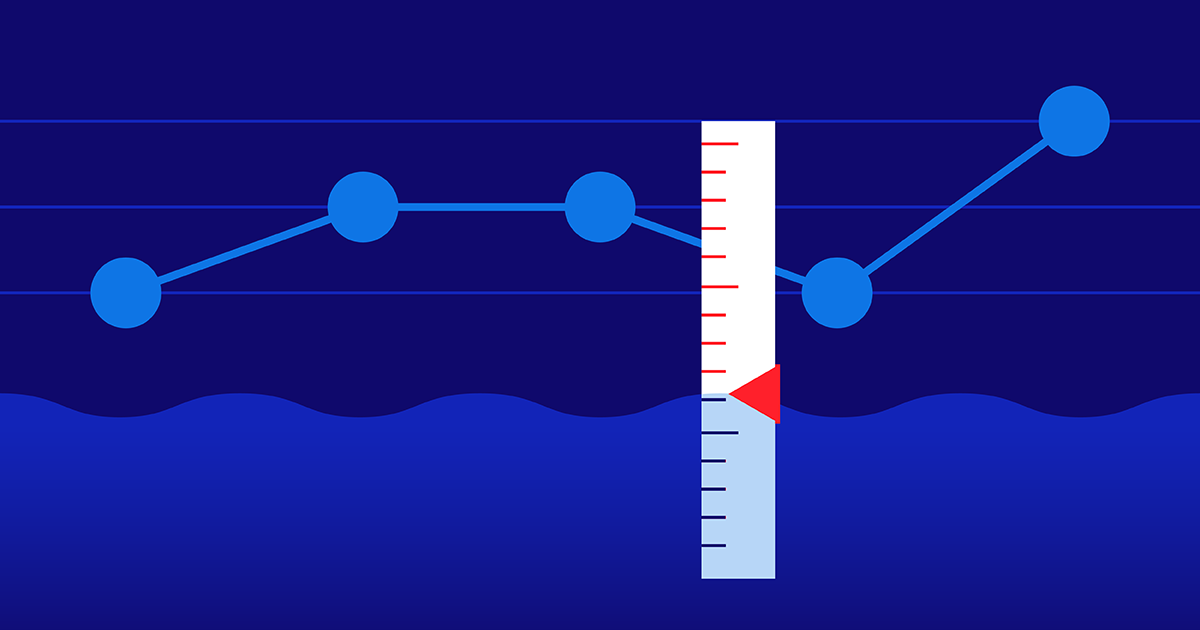
We store water in our reservoirs to limit the impact of spring flooding
Every winter, Hydro‑Québec draws down the level in its reservoirs in anticipation of spring runoff. Our reservoirs are then able to accommodate the water expected from snowmelt and rainfall. However, the duration, start date and extent of the drawdown varies from year to year depending on weather conditions.
During spring flood season, we manage the regulatable sub-watersheds judiciously to reduce the magnitude of the flood downstream. We proceed with caution, as some of our reservoirs can fill up very quickly, which can then have consequences downstream. The management of our facilities depends on the water levels expected. Our top priority is always public safety and the safety of our infrastructure.
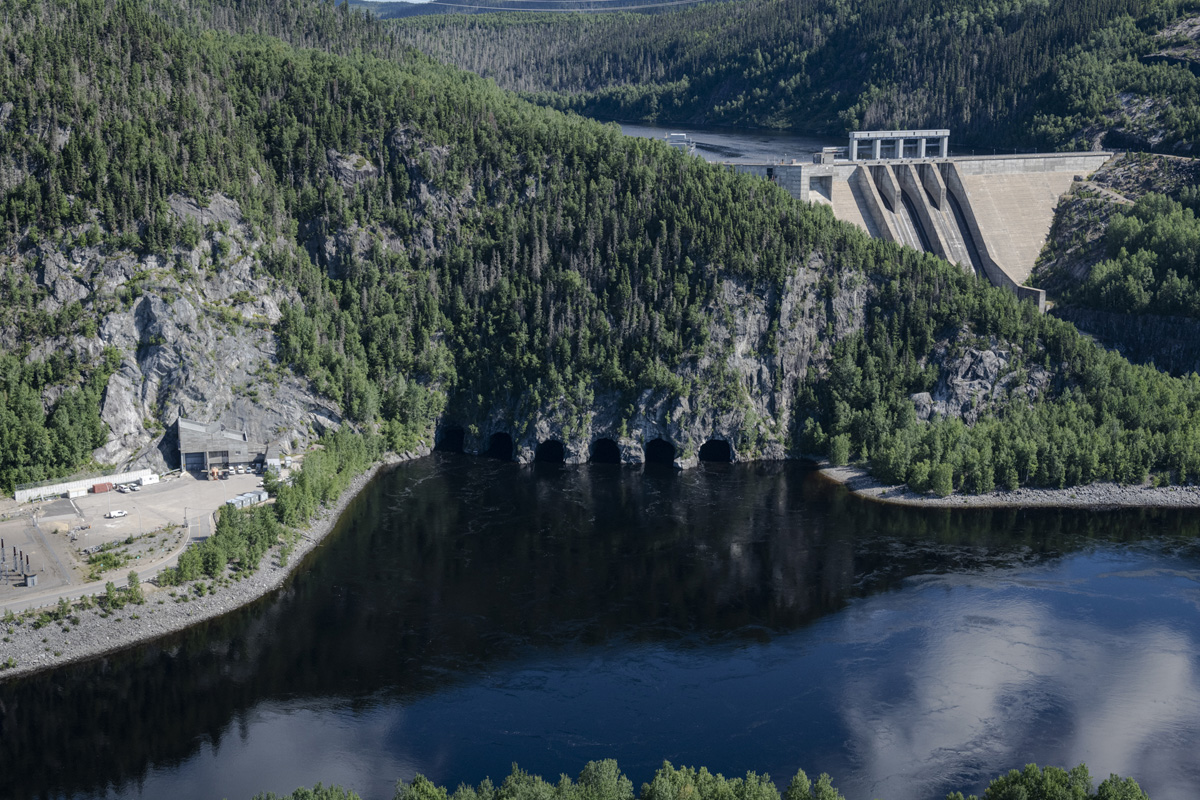
We have access to various storage capacities:
- Multi year reservoirs are very large reservoirs that regulate inflows over a period greater than one year.
Manicouagan reservoir, upstream of Daniel Jonhson dam (Manic 5 generating facility), belongs in this category, as does the Outardes 4 reservoir, upstream of Outardes 4 generating station. With their respective capacities of 1,788 km2 and around 640 km2, these are the only two reservoirs in the region with a storage capacity measured in years.
- Annual reservoirs are emptied every year. Their storage capacity is limited to a few days, depending on water inflows.
In the region, the reservoirs created by the Bersimis 1, Toulnustouc, Sainte Marguerite 3 and Romaine 4 dams are annual.
- The storage available upstream of a run of river generating station is very limited—a few hours at most—and cannot be used to reduce spring runoff.
Bersimis 2, Manic 3, Manic 2, Manic 1, Outardes 3, Outardes 2, Romaine 3, Romaine 2 and Romaine 1 are run of river generating stations.
Questions on how Hydro‑Québec facilities are managed? Write to us at Affairesregionales@hydroquebec.com.
